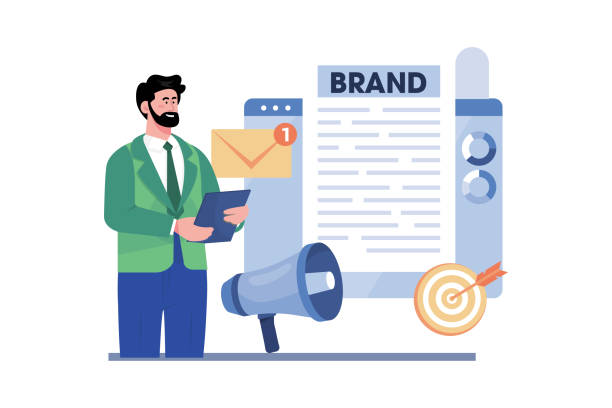The Fundamental Importance of User-Friendly Website Design in the Digital Age

In today’s fast-paced world, an online presence is vital for every business, and your website serves as your digital storefront.
But simply having a website isn’t enough; what matters is that the website is designed for users.
User-Friendly Website Design is no longer a competitive advantage; it’s an undeniable necessity.
A website that is easy to navigate, clearly presents information, and provides an enjoyable experience for the visitor directly impacts visitor numbers, conversion rates, and ultimately, your online success.
User Experience (UX) and User Interface Design (UI) are two fundamental concepts at the heart of a user-friendly website design.
These concepts ensure that users can not only access what they need but also be satisfied with the process of obtaining it.
A poorly designed website can lead to an increased Bounce Rate and the loss of potential customers.
Visitors may leave your site due to complexity, slow loading speed, or unclear information, and never return.
Conversely, websites that focus on #user_friendliness not only attract users but also keep them engaged for longer.
This significantly helps improve #SEO and site ranking in search engines, as search engines give higher scores to websites that provide a positive user experience.
Therefore, investing in user-friendly website design is an investment in your #online_success and business sustainability.
This descriptive and educational section provides you with an overview of the importance of this topic.
Did you know that 85% of customers check your company’s website before any interaction?
Build a corporate website worthy of your reputation with Rasaweb.
✅ Increase credibility and customer trust
✅ Attract high-quality leads
⚡ Get free website design consultation
Key Principles of Successful User-Friendly Website Design

To achieve a user-friendly website design that is truly appealing and useful for users, a set of principles and strategies must be carefully followed.
These principles serve as the backbone of every successful website.
The first and most important principle is simplicity and clarity.
A cluttered and complex user interface quickly confuses and fatigues users.
Information should be easily understandable and accessible, and the path to the goal should be clear.
The second principle is consistency in design; this means that navigation elements, fonts, colors, and layout should be uniform across all pages of the website.
This consistency makes users feel comfortable and familiar, eliminating the need to re-learn how to interact with each part of the site داشته باشند.
The third principle is immediate feedback.
When a user performs an action (e.g., clicking a button or filling out a form), the site should quickly react to assure the user that their action was successful.
This feedback can include changing button color, displaying a confirmation message, or altering the state of an element.
The fourth principle is flexibility and efficiency.
A good website should allow users to perform their tasks in various ways and also provide shortcuts and tools for more experienced users.
For example, the ability to search, filter content, or quickly access frequently used sections.
The fifth important principle is error support and prevention.
The system should prevent user errors as much as possible and, if errors occur, provide clear and useful guidance for correcting them.
Error messages should be friendly, clear, and include solutions, not just an ambiguous error code.
Adhering to these principles in user-friendly website design means deep attention to user needs and behavior.
This specialized and educational section describes the main foundations of a successful and user-friendly website.
Deep Understanding of the Audience: The Main Secret to User-Friendly Website Design

For a user-friendly website design to be truly effective, you must deeply understand your audience.
Without understanding the needs, behaviors, interests, and problems of target users, your design might go astray and fail to meet their expectations.
This is where the importance of User Research becomes prominent.
User research encompasses a set of methods and techniques that help you gain a closer look into the world of your users, allowing you to design based on data and evidence rather than guesswork.
This research can include interviews with potential and current users, surveys, focus groups, website data analysis (such as Google Analytics), usability testing, and the creation of user personas.
A user persona is a fictional but data-driven character representing a specific segment of your audience, helping you to always consider their needs and goals throughout the design process.
For instance, if your audience consists of students, their search needs and habits will differ from those of an entrepreneur, and user-friendly website design must reflect these differences.
Table 1: Common User Research Methods and Their Objectives
| Research Method | Primary Objective | Execution Time |
|---|---|---|
| User Interviews | Gaining deep qualitative insights into needs and problems | Early in the project, for defining needs |
| Online Surveys | Collecting quantitative data from a wide range of users | Mid to late project, for evaluation |
| Usability Testing | Identifying practical problems and barriers to site use | At various stages of design and development |
| Website Data Analysis | Understanding user behavior based on statistical data | Continuously after launch |
This specialized guidance approach ensures that every decision made in the user-friendly website design process is based on a real understanding of the audience, not merely guesswork or the designer’s personal preferences.
Information Architecture and Seamless Navigation in User-Friendly Website Design

One of the main pillars of a user-friendly website design is strong Information Architecture (IA) and an intuitive Navigation system.
Information Architecture refers to organizing and labeling website content so that users can easily find the information they need.
Imagine a large library where books are piled up without any specific categorization or order; finding a particular book in such an environment would be impossible.
A website without proper IA is just like that.
In a user-friendly website design, information architecture must be carefully planned.
This includes logical categorization of content, using clear and understandable labels for menus and links, and creating a logical hierarchy of information.
For example, the main menu should include general categories, and each category should be divided into more specific subcategories.
The use of “breadcrumbs,” which indicate the user’s path on the website, also helps users understand their location on the site and easily return to previous pages.
The website navigation system is the bridge between the user and information.
This system should not only be easy to use but also remain consistent across all pages of the site.
Navigation menus should be clear, concise, and accessible.
The menu’s placement (usually at the top of the page or in a sidebar) and how users interact with it (e.g., a hamburger menu for mobile) are also of great importance.
Poor navigation, even if your content is excellent, can completely ruin the user experience.
Using an internal search function is also essential for websites with a lot of content, so users can directly find what they are looking for.
This specialized and guiding section highlights the importance of intelligent information organization and access paths in a user-friendly website.
Are you worried that your old company website is scaring away new customers? Rasaweb solves this problem with modern and efficient corporate website design.
✅ Increases your brand’s credibility.
✅ Helps attract targeted customers.
⚡ Contact Rasaweb for a free consultation!
The Role of Visual Design and Aesthetics in User Attraction
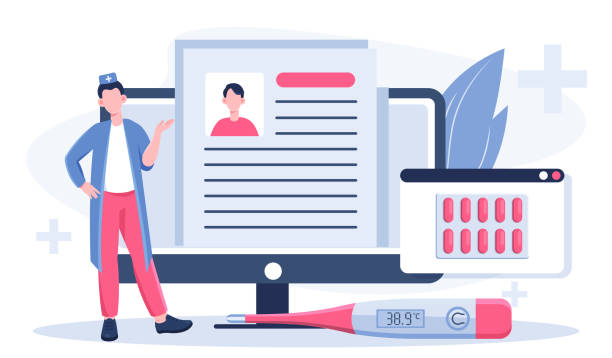
In addition to functionality and structure, visual design and aesthetics also play a vital role in user-friendly website design.
The first thing a user encounters when visiting a website is its appearance.
An attractive, modern, and harmonious visual design can convey a sense of trust and professionalism and encourage users to explore the site further.
Conversely, a messy, outdated, or inconsistent design can cause users to quickly leave the website.
Intelligent use of colors, fonts, images, and whitespace all contribute to creating a pleasant visual experience.
Colors can evoke specific emotions and influence user behavior.
For example, blue often conveys a sense of trust and calmness, while red can indicate urgency or excitement.
Choosing a color palette that matches the brand identity and website message is crucial.
Typography is another key element.
Text readability is of high importance; fonts should be chosen in a way that long-term reading of the text is not bothersome for the user.
Font size, line spacing, and the color contrast between text and background all impact readability.
Whitespace, or negative space, is as important as other visual elements.
These spaces make the design appear less cluttered and provide rest for the user’s eyes.
Without sufficient whitespace, the design will look crowded and confusing.
Furthermore, using high-quality and relevant images and videos can help convey messages and make the website more vibrant and engaging.
This descriptive and engaging section addresses the importance of aesthetics in completing the experience of a user-friendly website design and demonstrates that good appearance is not just a superficial layer but a crucial factor in the website’s effectiveness and appeal.
Responsiveness and Accessibility: A Big Step Towards Inclusive Website Design
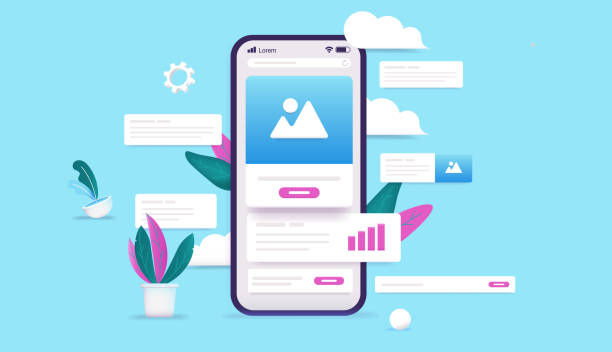
In today’s world, where users access the internet from various devices, Responsive Design and Accessibility are two vital features for any user-friendly website design.
Responsive design means that your website should be able to automatically adapt its appearance and functionality to the screen size of the user’s device (whether computer, laptop, tablet, or smartphone).
This feature ensures that, regardless of the device used, the user experience is always optimal and pleasant.
A website that does not display correctly on mobile will lose a large portion of its audience.
On the other hand, web accessibility means that your website should be usable by all individuals, including those with physical or cognitive disabilities.
This includes providing alternative text for images (for visually impaired users who use screen readers), the ability to navigate with a keyboard instead of a mouse, using appropriate color contrast for people with visual impairments, and providing subtitles for videos.
A truly user-friendly website design excludes no user and believes in equal access for all.
Neglecting accessibility can not only disregard a portion of the audience but may also have legal consequences.
Google increasingly considers the importance of responsiveness and accessibility in its ranking algorithms.
A mobile-friendly and accessible website not only provides a better user experience but also performs better in search results.
This specialized and informative section emphasizes the importance of inclusivity in user-friendly website design and demonstrates how these two aspects can enable access to your content for a wider range of users and ensure your online success.
Performance and Speed Optimization: The Cornerstone of User-Friendly Website Design
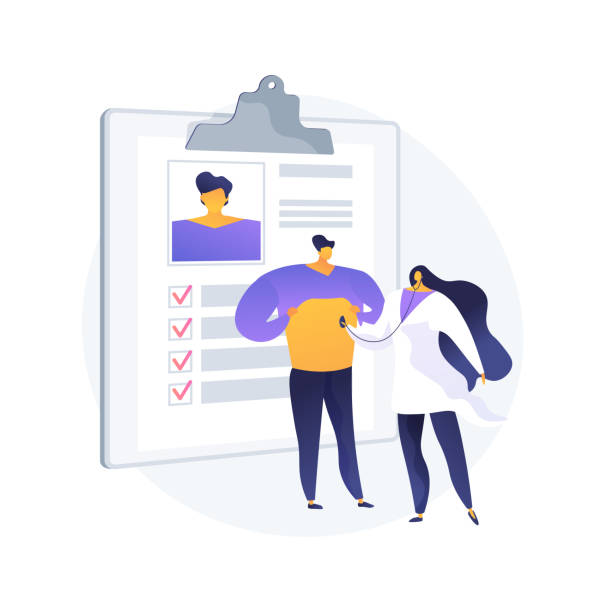
Website loading speed is one of the most important factors in user-friendly website design and directly impacts user experience, conversion rate, and SEO ranking.
Studies have shown that users expect a website to load in less than 2 seconds and tend to abandon the page if there’s a delay.
Consequently, optimizing website performance and speed is no longer an option but an absolute necessity.
Several factors influence website loading speed.
These include image optimization (reducing size without quality loss), using a CDN (Content Delivery Network) to deliver content from the server closest to the user, code optimization (reducing CSS and JavaScript files), using browser caching, and choosing suitable hosting.
Various tools such as Google PageSpeed Insights, GTmetrix, and Pingdom Tools are available to help you evaluate your website’s performance and identify its weaknesses.
Table 2: Key Website Speed Metrics and Their Importance
| Metric | Description | Importance for User/SEO |
|---|---|---|
| LCP (Largest Contentful Paint) | Time to render the largest content element in the viewport | Primary indicator of loading speed (UX) and Core Web Vital (SEO) |
| FID (First Input Delay) | Time required for the site to respond to the first user interaction | Indicator of interactivity (UX) and Core Web Vital (SEO) |
| CLS (Cumulative Layout Shift) | Amount of unexpected layout shifts on the page | Indicator of visual stability (UX) and Core Web Vital (SEO) |
| TTFB (Time to First Byte) | Time to receive the first byte of data from the server | Indicator of server and network health, important for starting the load |
Additionally, reducing HTTP requests and compressing files can also significantly increase speed.
User-friendly website design not only focuses on appearance and usability but also addresses speed and efficiency.
This analytical and specialized section demonstrates how technical optimization can improve user experience and contribute to online success.
Testing and Iteration: A Path to Continuous User Experience Improvement
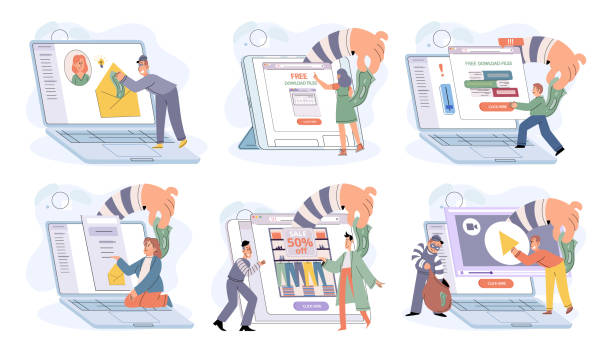
The process of user-friendly website design is not a fixed and static cycle, but rather an iterative and dynamic process.
Even the best designers cannot deliver a completely flawless website from the outset.
The key to success lies in continuous testing and iteration based on feedback.
This critical stage ensures that your website remains responsive to user needs not only upon launch but throughout its lifespan.
Usability Testing is one of the most important methods in this phase.
In this process, real users perform specific tasks on the website, and designers or researchers observe their behavior and identify potential problems.
These tests can be conducted in-person, remotely, or using tools that record user mouse movements and clicks.
In addition to usability testing, A/B Testing is also a powerful optimization method.
In A/B testing, two different versions of a page (or a specific element) are shown to different groups of users, and the performance of each version is compared against key metrics (such as conversion rate) to determine the best version.
After collecting feedback and data, it’s time for the iteration and improvement phase.
This means you must implement the necessary changes based on the test findings.
These changes might include navigation optimization, rewriting texts, altering visual layout, or improving loading speed.
This feedback and improvement cycle should continue continuously, as user behavior and web technologies are constantly changing.
This guiding and analytical section emphasizes that user-friendly website design is an ongoing process that requires continuous attention and optimization to maintain efficiency and appeal.
Tired of losing business opportunities due to not having a professional corporate website? Worry no more! With Rasaweb’s corporate website design services:
✅ Your brand’s credibility and professionalism will increase.
✅ You will attract more customers and sales leads.
⚡ Get a free consultation now to get started!
Beyond the Basics: Innovation in Website Design

After mastering the fundamental principles of user-friendly website design, it’s time to look beyond the basics and explore innovations and future trends in this field.
Have you ever considered what could elevate the user experience to entirely new levels? One such area is the use of Artificial Intelligence (AI) and Machine Learning for personalizing the user experience.
Imagine a website that can analyze your past behavior and personalize content, products, or services specifically for you.
This level of personalization significantly enhances the user experience, making users feel that the website has been entirely designed for them.
Other innovations include Voice User Interfaces (VUI).
With the proliferation of voice assistants like Siri and Alexa, users expect to be able to interact with websites via voice as well.
This necessitates major changes in how navigation and content interaction are designed.
Also, Augmented Reality (AR) and Virtual Reality (VR) are opening new horizons in web design.
Websites can offer immersive experiences that allow users to view products in their real-world environment or virtually visit specific locations.
These technologies can elevate user interaction to an entirely new and entertaining level.
The question is how these emerging technologies can be integrated into user-friendly website design in a way that is not only attractive but also truly useful and efficient.
The main challenge is to use the latest technologies in a way that does not complicate the user experience, but rather simplifies and enriches it.
This thought-provoking and specialized content section delves into the future of user-friendly website design and challenges current boundaries.
Long-Term Benefits of Investing in User-Centric Website Design
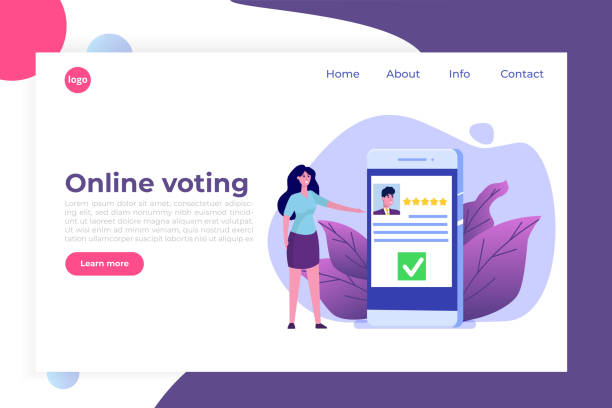
Ultimately, investing in user-friendly website design is not just an expense, but a long-term investment with significant returns.
The benefits of a website fundamentally designed for users extend far beyond a beautiful appearance or initial smooth performance.
These advantages include increased customer satisfaction, improved brand loyalty, reduced support costs, and a significant boost in sales and conversions.
The first and most important benefit is increased user satisfaction.
When users can easily find what they want, perform their tasks without problems, and enjoy interacting with the website, the likelihood of them returning to the site and becoming loyal customers significantly increases.
User satisfaction directly leads to increased brand loyalty.
Satisfied customers not only return to your site themselves but also recommend it to others, which is a powerful and free form of word-of-mouth marketing.
Reduced support costs are another hidden benefit of a user-friendly website design.
A well-designed website with clear navigation creates fewer questions and problems for users, thus reducing the need to contact the support team, which saves the company time and resources.
In the business dimension, user-friendly websites typically have higher conversion rates.
Whether your goal is to sell a product, collect leads, or sign up for a newsletter, a smooth and pleasant user experience increases the likelihood that users will take your desired action.
Finally, user-friendly website design contributes to the continuous improvement of your site’s ranking in search engines because search engines prefer websites with a good user experience.
This positive cycle of user satisfaction, loyalty, cost reduction, and increased revenue demonstrates why user-friendly website design is at the core of every successful digital strategy.
This descriptive and informative section provides a comprehensive outlook on the value and return on this crucial investment.
Frequently Asked Questions
And other services by Rasaweb Advertising Agency in the field of advertising
Smart Conversion Rate Optimization: A new service for increasing click-through rates through Google Ads management.
Smart Website Development: A new service for improving SEO ranking through attractive UI design.
Smart Direct Marketing: A new service for increasing online growth through marketing automation.
Smart Link Building: A specialized service for improving SEO ranking based on Google Ads management.
Smart Sales Automation: Revolutionize digital branding with the help of attractive UI design.
And over a hundred other services in the field of online advertising, advertising consultation, and organizational solutions
Online Advertising | Advertising Strategy | Advertorials
References
Principles of User-Friendly Website Design
Website Optimization Solutions
The Importance of UI and UX in Web Design
How to Succeed Online with a Website?
? Are you ready for your business to shine in the digital world? Rasaweb Afarin Digital Marketing Agency, with a specialized and creative team, offers the best comprehensive solutions including custom website design, SEO optimization, and smart social media management for your sustainable growth and success.
📍 Tehran, Mirdamad Street, next to Bank Markazi, Southern Kazeroon Alley, Ramin Alley, No. 6


